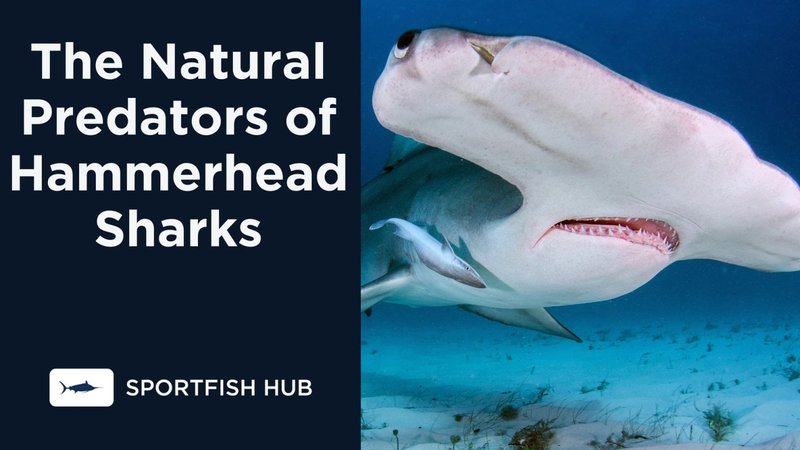
Imagine your garden is like a small kingdom, with various creatures playing their part in keeping balance. Just like any good story, there are heroes and villains. In this tale, the **hammerhead worm** can act like a villain, consuming beneficial earthworms and disrupting the soil. Thankfully, nature has its own superhero squad ready to step in. Now, let’s dive into the fascinating world of these hammerhead worm predators, and learn how you can let them do their work in your garden.
Understanding Hammerhead Worms
Before we explore the predators, it’s helpful to understand what hammerhead worms are and why they matter. These worms belong to the genus *Bipalium*, and they’re usually found in tropical and subtropical regions. They’re not just any regular worm; they’re known for their unique shape and hunting behavior. Hammerhead worms are predatory, meaning they feast on other small invertebrates, including earthworms, which are essential for healthy soil.
You might be wondering how they got their name. Well, it’s all in the head! Their flat, hammer-like head gives them a distinctive silhouette that can be a little unsettling. But despite their appearance, these worms are fascinating. They can reproduce asexually, meaning a single worm can create offspring on its own. This ability can lead to a rapid increase in their population, making them a concern for gardeners.
In the grand scheme of nature, hammerhead worms have their place. However, when they start to multiply too much, it can affect your garden’s health. That’s why knowing their natural predators becomes essential.
The Role of Natural Predators
So, why are natural predators important in controlling hammerhead worm populations? Essentially, they act as a natural form of pest control. Rather than relying on chemicals that could harm beneficial organisms, introducing or encouraging these predators creates a balanced ecosystem. It’s like having your own personal garden defense team.
Natural predators include a variety of creatures, from birds to certain insects. They feed on hammerhead worms, keeping their numbers in check. This method is not only safer for the environment, but it often proves more effective in the long run. By fostering a community of natural predators, you create a self-sustaining system that helps maintain the health of your garden.
Ultimately, understanding the role of these predators is the first step in managing any hammerhead worm problem you might encounter.
Birds: Feathered Hunters
One of the most significant groups of natural predators for hammerhead worms is birds. Many species, such as robins, sparrows, and starlings, enjoy a diet that includes these slimy intruders. Birds are opportunistic feeders, meaning they’ll eat whatever is available and easy to catch.
By attracting birds to your garden, you can effectively reduce hammerhead worm populations. Simple methods like adding bird feeders or birdbaths can create a welcoming environment. You might even consider planting some native shrubs or trees to provide shelter and nesting sites for birds. Not only will you enjoy watching them flit around, but you’ll also benefit from their pest control services.
It’s a win-win situation, right? You help the birds thrive, and they help your garden flourish.
Nematodes: The Tiny Allies
If you’ve never heard of nematodes, you’re in for a treat. These microscopic roundworms are nature’s undercover agents, quietly working to control pest populations in the soil, including hammerhead worms. They’re so small that you might not even notice them, but they play a crucial role in maintaining soil health.
Certain species of nematodes specifically target hammerhead worms. When introduced to your garden, these nematodes enter the bodies of the worms and effectively kill them. You might be wondering how to get nematodes for your garden. They’re often available at garden centers or online, and you can apply them as a soil drench or mix them into the soil.
Think of nematodes as the secret weapon in your garden arsenal. They work quietly, often without you even knowing they’re there!
Earthworms: The Unlikely Heroes
Yes, you read that right! While hammerhead worms prey on earthworms, the good news is that healthy populations of certain earthworm species can actually help control hammerhead worm numbers. These beneficial earthworms improve soil structure and promote nutrient cycling, making the garden a healthier place overall.
When your garden soil is rich in organic matter, earthworm populations thrive. Healthy earthworm populations can outcompete hammerhead worms for resources, reducing their numbers naturally. So how do you encourage earthworms to stick around? Adding organic matter like compost or mulch can provide food and habitat for them.
By fostering a thriving population of earthworms, you can create a dynamic environment that discourages hammerhead worms. It’s all about collaboration in nature, and these little wrigglers are integral to that equation.
Beneficial Insects: Nature’s Pest Control Agents
When you think about garden predators, you might imagine something large or obvious. But don’t forget about the tiny warriors: beneficial insects. Certain insects, like ground beetles and rove beetles, are notorious for hunting down hammerhead worms and other garden pests.
These beetles are essential for maintaining a balanced ecosystem in your garden. They roam the soil, preying on various small invertebrates. By attracting them to your garden, you’re encouraging a natural defense system against hammerhead worms.
To attract these beneficial insects, you can create habitats with native plants and avoid using pesticides, which can harm them. Planting flowers that bloom at different times of the year can ensure a continuous food source for beneficial insects. It’s all about creating a diverse and healthy garden that supports a variety of life.
Frogs: The Slimy Predators
Frogs and toads might not be the first creatures that come to mind when considering garden predators, but they certainly play a role. These amphibians enjoy munching on all sorts of pests, including hammerhead worms.
To attract frogs to your garden, you can create a small pond or water feature. Frogs are drawn to areas with plenty of moisture and shelter, so consider adding rocks, logs, or native plants.
Having frogs around is beneficial for your garden’s ecosystem. Not only do they eat hammerhead worms, but they also help control other pests, making them a valuable addition to your garden team.
Creating a Balanced Ecosystem
Now that we’ve covered a variety of natural predators, you might be wondering how to create a balanced ecosystem in your garden. It’s all about promoting biodiversity and ensuring that your garden can support different species.
Start by avoiding harsh chemicals that can harm beneficial organisms. Instead, focus on creating a vibrant environment. Plant a mix of native flowers, shrubs, and trees to support a variety of creatures. You can also add features like birdhouses, ponds, and compost piles to provide habitat and food.
Promoting healthy soil is equally important. Regularly add organic matter and rotate your plants to encourage a thriving ecosystem. The more diverse your garden is, the better it can regulate itself and keep hammerhead worms at bay.
In summary, your garden is a living system filled with interconnected species. By understanding and promoting the natural predators of hammerhead worms, you can foster a thriving ecosystem that benefits everyone involved.
In conclusion, hammerhead worms may not be the easiest garden guests, but by employing natural predators, you can manage their numbers effectively. From birds and nematodes to frogs and beneficial insects, these creatures work together to maintain balance in your garden. So, next time you see a hammerhead worm, remember that nature has its own superhero squad ready to swoop in and help!

